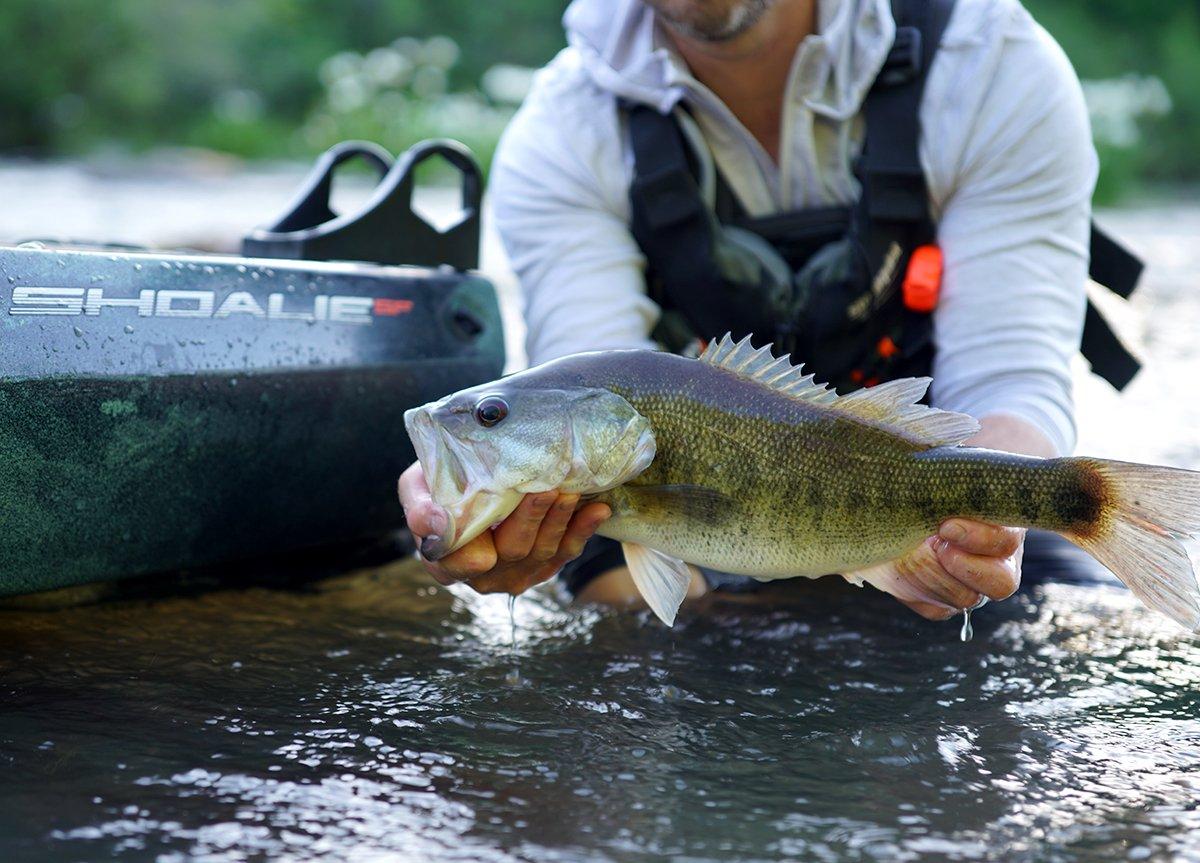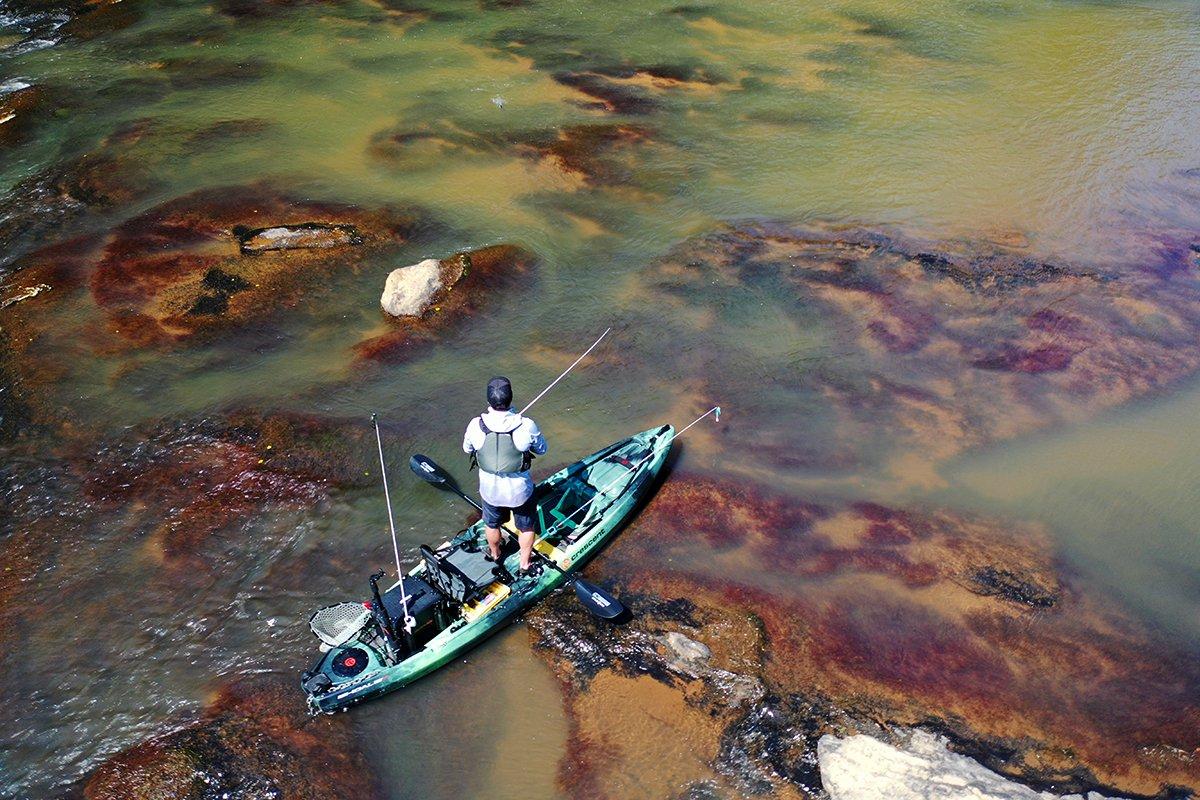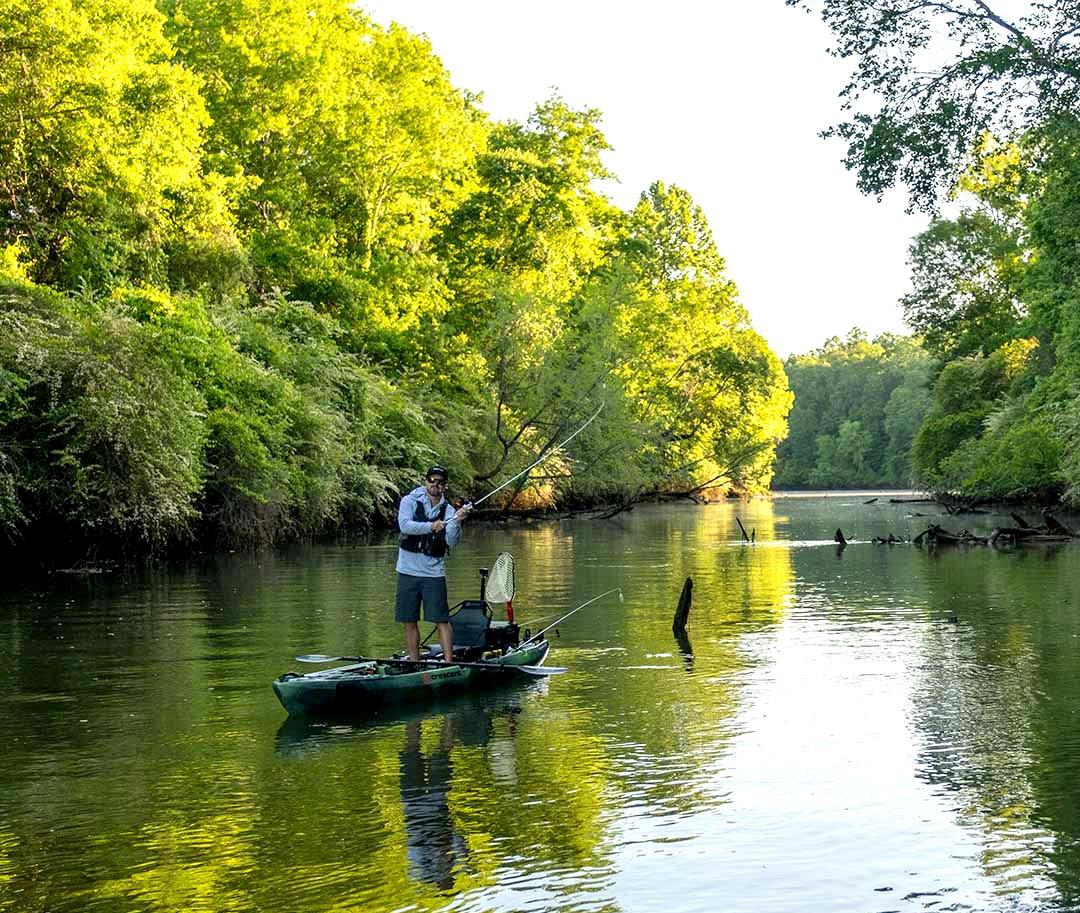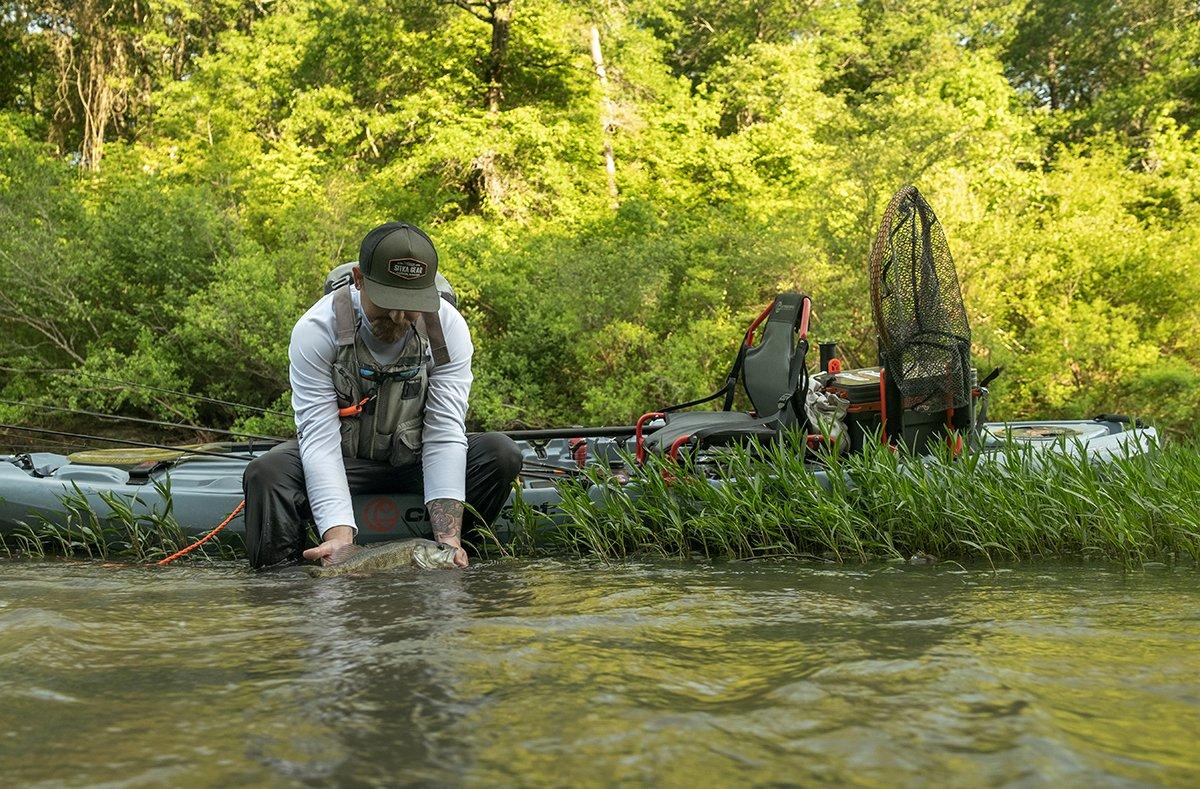Champion angler Drew Gregory discusses the special sauce that gives kayak anglers a leg-up on unpressured bass
Want to catch more bass from a kayak? You'd do well to listen to the advice of Drew Gregory, one of the pioneers of kayak bass fishing and a top tournament competitor. These five tips make a great guideline for kayak anglers of all skill levels to follow.
1. Start with the Right Boat
Initially, Gregory's leading tip may seem like a sales pitch; after all, he's the director of fishing kayaks for Crescent boats. But Gregory is quick to point out that it's not so much the brand of kayak that matters as much as the overall concept. Everybody is trying to make kayaks into mini bass boats, he said. They add trolling motors, multiple depth-finders, forward sonar, and, in the end, the boat weighs 200 pounds and requires a trailer.
Gregory thinks that defeats the purpose. His personal choice in boats is a Crescent Shoalie that weighs just 76 pounds. The reason? The special sauce in kayak fishing is getting to places with un-pressured fish, he said. Places bass boats can't get to. Gregory has been known to portage into areas, crossing ultra-shallow waters and multiple logjams to reach his hotspots. You can't do that in a big, pedal-driven boat, he said. Still, Gregory claims his boat choice sacrifices nothing. It's safe in big water. It can do everything a big boat can, but also get into better places. And I don't need a concrete launch ramp to use it.
(Don't Miss: Advanced Tips for Bass Fishing Boat Docks)
2. Fish Straight Braid
Nearly all bass fishermen use braided line for some techniques, but few utilize the low-stretch lines without a fluorocarbon leader. Gregory uses braid 100% of the time, and he never uses a leader. Why? You can't step back in a kayak to set the hook, like in a bass boat. In fact, most of the time in a kayak, you're moving or coasting toward the fish when it hits. The loss of leverage means hooking bass from a kayak is much more difficult than from a bass boat. That's why Gregory uses the lowest stretch lines possible, and relatively heavy tackle.
Your setup should be ready and capable for the biggest fish you're going to catch, he said. One more tip: take consideration of your movement. I usually try to stop the boat or back-paddle before casting, to give me my best shot at a quality hookset.
3. Sharpen Your Hooks
To have a good shot at hooking and landing those big bass, hooks must always be sharp. Gregory insists on having a recessed spot near his fishing seat for a sharpening stone. He uses it regularly, and he primarily relies on single-hook lures. I want one big hook for a big fish, especially in these target-rich areas, Gregory said. I frequently cast up on the bank and pull my bait off. Hooks that constantly contact the shoreline and heavy cover can get dull, and so Gregory touches his up often. It makes a difference.
(Don't Miss: The 3 Best Lures for Catching a 10-Pound Bass)
4. Keep it Sneaky
We've all heard the term paralleling the bank, where an angler positions the boat close to shore to maximize the cast. Gregory takes this to a new level in a kayak, which he can put completely against the shoreline if he needs to, keeping his lure in the strike zone for the entire cast. And when fishing tough-to-reach spots, Gregory goes the extra mile to ensure his lure is one of the few seen by bass tucked in cover. I go under docks, under and across dock cables, under walkways, everywhere, he said. I go up in there and get another angle. I want to make casts that a fisherman in a bass boat simply can't make. That approach frequently leads Gregory to totally unpressured fish that are often eager to bite.
5. Keep the Clutter Out
Gregory is puzzled about a noticeable trend of modern kayak anglers. They have rods sticking up behind them. Where I fish, you can't have that! he said. Gregory's angling approach is built around getting into tight quarters, where rods that are sticking up can get broken, or at least impede his casting ability.
I make big looping casts with lots of line out, so I need a much sleeker package, he said. Gregory's kayak has storage tubes to keep rods below deck. Often, he keeps a combo for a specific technique down below, like a mat-punching stick or a spinning outfit. The rods that Gregory rotates through regularly stay low against the deck. He also tries to limit the overall number of outfits he carries, and has taught himself to utilize just a few rod-and-reel combos for the vast majority of his techniques.
Prior to a fishing day, he'll pick his supply often based on fishing conditions. In tight tributary creeks or ultra-thick cover, Gregory will often scale down to sub 7-foot rods, in order to make more precise casts and not stay hung up. Open water calls for longer rods. In general, Gregory tries to limit himself to just three or four combos in his boat, preferring to change out lures when he needs to, knowing that everything runs correctly through his universal rod approach.
Drew Gregory is a name you'll often hear when talking kayaks, from design to promotion to tournament dominance. His methods are simple, yet refined and somewhat strict. In order for him to find his special sauce more often, he's developed a game plan that he rarely strays from. Chances are some version of that plan will work for you, too.
(Don't Miss: Why You Suck at Throwing a Baitcaster)











